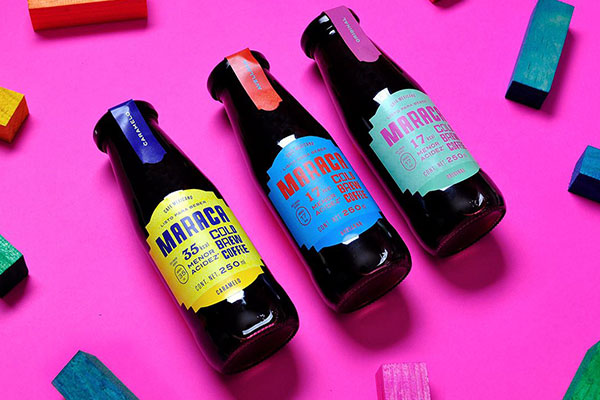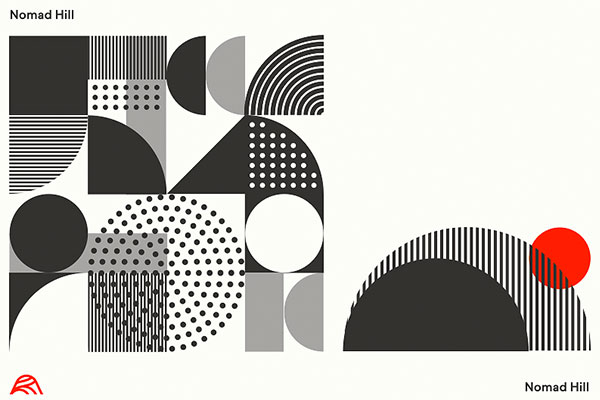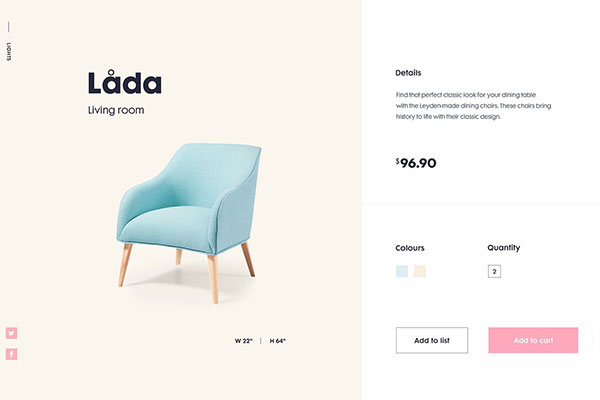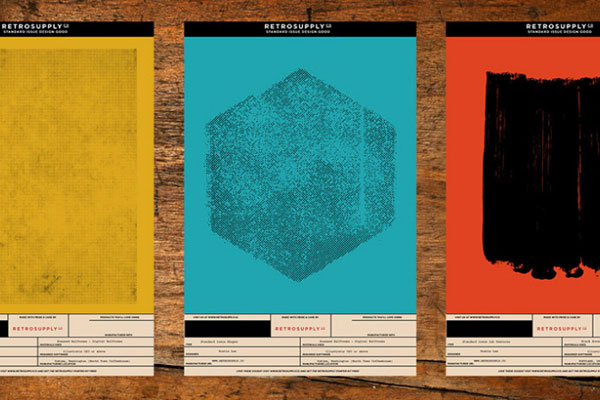What is Graphic Design?
Graphic design is the skill and art form of combining photography, typography, and illustration in order to communicate, inform, or aspire the viewer. This process is done with the aid of software that’s available for everyone or by hand. The field of graphic design is considered a subset of communication design and visual communication.

Graphic design is all around us. It’s commonly used in advertising, websites, books, magazines, corporate design, packaging, user interfaces, signage, and more. In this article, we clarify everything you need to know about graphic design, so stick around.
7 Elements of Design
A lot of us tend to think that design is merely about bringing a good idea to life, which is partially true, but it’s also about fully grasping the basics and underlays of the subject. Here are 10 basic elements that every graphic designer should know and utilize in his/her designs.
01: Line
We all know what a line is when it comes to drawing, but in the field of graphic design, lines are basically the connection between any two points. Lines are the most basic factors in design and they’re used for a wide variety of purposes. A great example of how lines are used to garner the attention of viewers and draw their eyes to a certain location is how books and magazines utilize lines to separate headlines from the content itself.
02: Color
Colors are an obvious component of design because they help develop an atmosphere or mood for the design. Expressions like ‘feeling blue’ or ‘seeing red’ solidifies the fact that colors tend to carry certain impressions and emotional depth. Colors can stand alone or work in unison with an array of other elements such as lines, shapes, and textures.
For more info color, check out our article on Color Theory here!
03: Shape
Whether organic or geometric, the incorporation of shapes adds interest and definition because they’re confined by boundaries created by lines or colors. Shapes tend to be utilized to create a sense of emphasis over a certain part of the design, be it on a magazine or web page. A graphic designer really shines when he/she knows how different shapes can interact together.
05: Texture
By definition, texture is the feel, appearance, or consistency of a certain surface or a substance, which seems like something that you don’t need to consider as far as graphic design. However, the fact of the matter is that texture can transform a two-dimensional medium into one that has three dimensions working for it. That’s something you can see on a lot of websites.
06: Typography

Similar to lines, colors, shapes, and textures, the fonts you use on a design can help deliver a certain feeling across to the viewer. For instance, you can utilize a certain font to imply seriousness or you can utilize another to give out a playful feel. The decisions related to typeface choice, and how to layout type are the difference between good and bad design.
What to learn more about typography, check out our article here.
07: Scale
There’s nothing more boring than a page that has similarly-sized shapes and objects. Scale is a vital factor of design because it helps add emphasis and interest. The variation in the size of the shapes, objects, or fonts needs to be subtle if it’s intended for professional content. For creative endeavors, however, bold variations are preferred.
For more info on the basics of graphic design, check out this article!
Types of Graphic Design
To understand the types of graphic design, we need to know what is graphic design used for. If you think about, graphic design is everywhere. Read further to see our list and graphic design examples.
Visual Identity Design
Utilizes the visual components of a brand’s identity to communicate unembodied qualities through design.
Marketing & Advertising Design

What you see in mediums such as magazines, billboards, menus, or PowerPoint presentations is all based on the basics of this type.
Packaging Graphic Design

Packaging designers create designs for physical products. Go into any store and you will see designs on packaging. The main differences between packaging design and digital design is that packaging designs are created in high resolution, and CMYK or Pantone colors.
Illustration

Graphic designers can specialize in illustration and be called illustrators. They can make original art for a wide range of mediums from branding and advertising, to digital design products and more.
Motion Graphic Design

Motion Graphic Design – As the name suggests, this type adds motion to the graphics. So think of video content like commercials, main titles, broadcast graphics, video intros, etc. Motion graphics designers storyboard and compose a variety of elements such as animation, cinematics, video, 3D assets, typography, imagery, and audio.
Graphic Design Software
As a graphic designer, you will mainly work with Adobe Creative Cloud. Here are the most commonly used programs broken down per graphic design specialty.
Graphic Designers: Adobe Photoshop, Illustrator, and Indesign
Motion Graphics: After Effects, Cinema 4D, or Maya, Adobe Premier
3D Design: Cinema 4D, or Maya.
UX Design: Adobe XD, Invision, Axure, UX Pin
Should You Go to Design School?
This is a complicated question and it depends on each individual’s situation. No matter what the lens, it should come down to cost vs value. Check out some of the pros and cons below.
Pros:
- Credibility: Some people in the creative industry still think that a degree or diploma is a must. Having a formal design education on your CV will be seen as instant credibility in the eyes of most.
- Skills: This depends on the quality of schooling you get. But overall, design schools mainly teach technical skills, and theory.
- Relationships: This might be the most under-rated aspect of going to design school. In fact, most designers I talk to say the same thing; relationship they built with either students or teachers have grown into opportunities post graduation.
- Commitment: It is human nature to follow through on something when you invest in yourself. But investing time and money into a design education, you will naturally become more committed long term.
Cons:
- Cost: Not everyone is in a position to afford design school. Even if you can get government loans, do you really want to to into that much debt?
- Time: Spending 2 – 4 years in design school can be risky depending on your age and situation. If you are young, not a big deal. On the other hand, if you are getting in the game late, you might be better off doing what we mentioned above in terms of learning online and learning through mentors/experience.
- Credibility: Some people in the creative industry still think that a degree or diploma is a must. As a result, if you haven gone to school, you won’t get hired. This bias is slowly changing however.
- Soft Skills: Since most design schools focus on technical skills, concepting, and theory, students are not taught critical soft skills that you need to know to succeed. The soft skills I’m talking about are communication, leadership and management.
- Lack of Commitment: If you do not have any skin in the game, it is easy to lose focus. Without the pressures that come from wanting to see a return on your investment, staying motivated to learn design on your own take an incredible about of resilience and dedication.
If you are leaning towards not going and you are wondering how to become a graphic designer without going to school, read on to know how you could go about it.
How to Be a Graphic Designer Without Going to School?
As long as you are driven and committed, anything is possible. Including becoming a graphic designer with no formal education. 10 years ago I probably wouldn’t have said this. But, now there is a shift happening in education worldwide.
The value of traditional education is now under questions. One of the reasons for this is that independent content creators now have the platform to reach global audiences. As a result, information, education, and access to mentors and coaches is at our finger-tips.
You can learn whatever you want, whenever you what it. This an amazing time to be a designer! All that said, learning, putting it into practice, and following through is a journey that takes time.
Here’s a rough overview of what it will take to become a graphic designer without going to school.
Learning Graphic Design Online (Overview)
As a high-level overview, you will not know what you will specialize in yet, until you start making progress. For example, I thought I was going to do print design. Now I mainly design for digital (Branding, UI, UX, and Art Direction).
I recommend starting with exploring and learning some basics. Then try things out to see what sticks. After that, you will have some knowledge and the foresight to begin to focus on what’s working.
01: Graphic Design Content (How to Research)
I recommend starting off by consuming graphic design content. You can start by searching Google and Youtube for graphic design articles and videos. Also check out design sites like Behance and Dribble. This will open up a world of inspiration and learning.
If you are wondering how to search for graphic design content, I have have couple tips. The first is to use auto suggest in the Google and Youtube search bar. Slowly type in a word or two related to the topic you want, and watch the drop-down, which is relevant content that other people are searching for. Here’s an example below:

To save you some time, here are a couple independant content channels I recommend you checking out. Most notable is The Futur. An online education platfrom for creative entrepreneurs. They are an industry leader, offering amazing free content and payed courses.
02: Learning Graphic Design Online
Now that you have been taking in information about graphic design, it’s time to take some action consistently. Whatever aspect of graphic design currently interests you, I recommend learning that first.
But note, if you want to be a well rounded designer with solid foundational skills, you will have to learn a wide variety of theory and technical skills.
I also beleive that to be a truley exceptional designer, and be able to progress into director type roles, you will eventually have to learn more than just design skills. I’m talking about skills that design schools don’t even teach, like leaderhsip, communication, marketing, entrepreneurship, etc.
Let’s dive into the core competencies and technical skills needed to be a self-taught graphic designer. It’s important to note; this list is based on what you would learn in design school. Learning all these, and how deep you go in each should ultimately depend on the individuals’ goals.
- Design Principles
- Lettering
- Typography
- Drawing (Visual Communication, Figure, Perspective)
- Design History
- Editorial
- Sequential Design (Storyboarding)
- Identity Design (Branding)
- User Interface / User Experience (Web, App)
- Packaging
- Photography
- 3D (Modeling, Rendering)
- Portfolio
Here is the big 3 learning platforms we recommend.
It’s important to mention that, when learning graphic design and learning in general, people learn differently. Some people are good with learning online, as they can find what they need to learn, extract the value, and go apply it. On the other hand, some people need to be very hands-on. They need real projects to work on. Others, need to be around people in a classroom setting. So you should identify what method of learning is best for you, and taylor the experience around that.
03: Work Your Way Up
Now that you are learning graphic design and building you skill set, it’s time to start working your way up. You’ve got to start gaining practical experience. But with no industry experience, where do you apply what you’ve learned?
The goal at this stage is to get feedback and amp up the learning. You gotta start at the bottom and work you way up.
One route is to start by looking for internships. Yes, work for free or little to no money. That is if you can. If you are transitioning to design as a side hustle, find friends and family to see if they need any design work. You could even make up fake projects, just like in school. Put your work up online. Overall, you just need to start applying the skills you are learning and get feedback.
04: Relationships & Mentors
One of the most impactful things you can do as a graphic designer is building relationships and getting mentors. Basically cuts down the time of learning. Relationships in the industry can also lead to jobs down the line. I can’t stress this enough, how you work with, and learn from others is key to growth as a graphic designer.
05: Learning Graphic Design Online (Summary)
Overall, if you want to be a self taught graphic designer, it is definitely possible. Just know that, like any decent career, it will take time, dedication, and hard work. All things considered, there has never been a better time to be a designer. Now it’s time to take action!
Conclusion
I hope we’ve answer the main question; “what is graphic design?”. In addition, given you some more information about graphic design, in case if you are considering learning how to be a self taught graphic designer.
Let us know in the comments if you have any thoughts on what it takes to be a self taught graphic designer.









